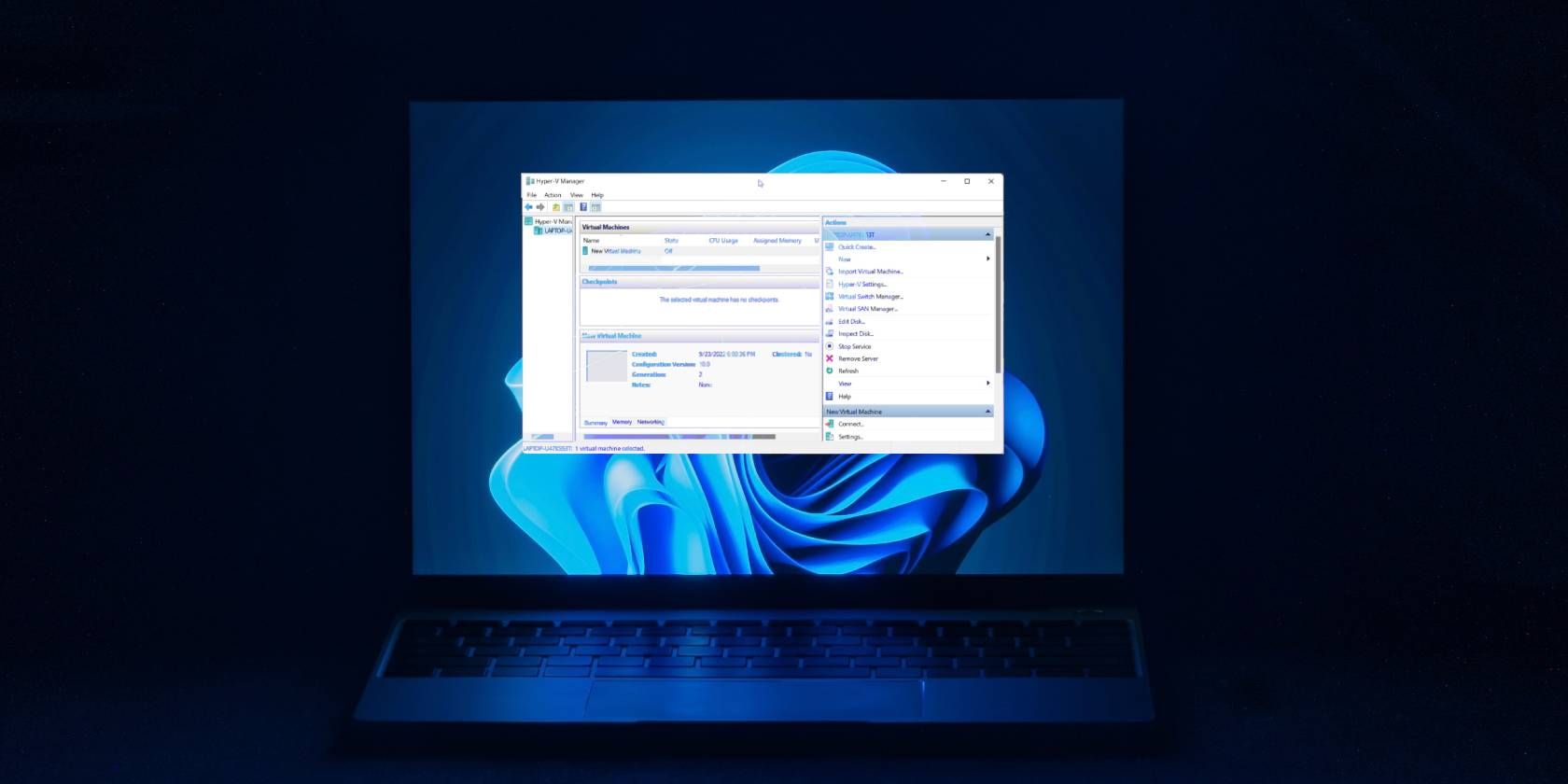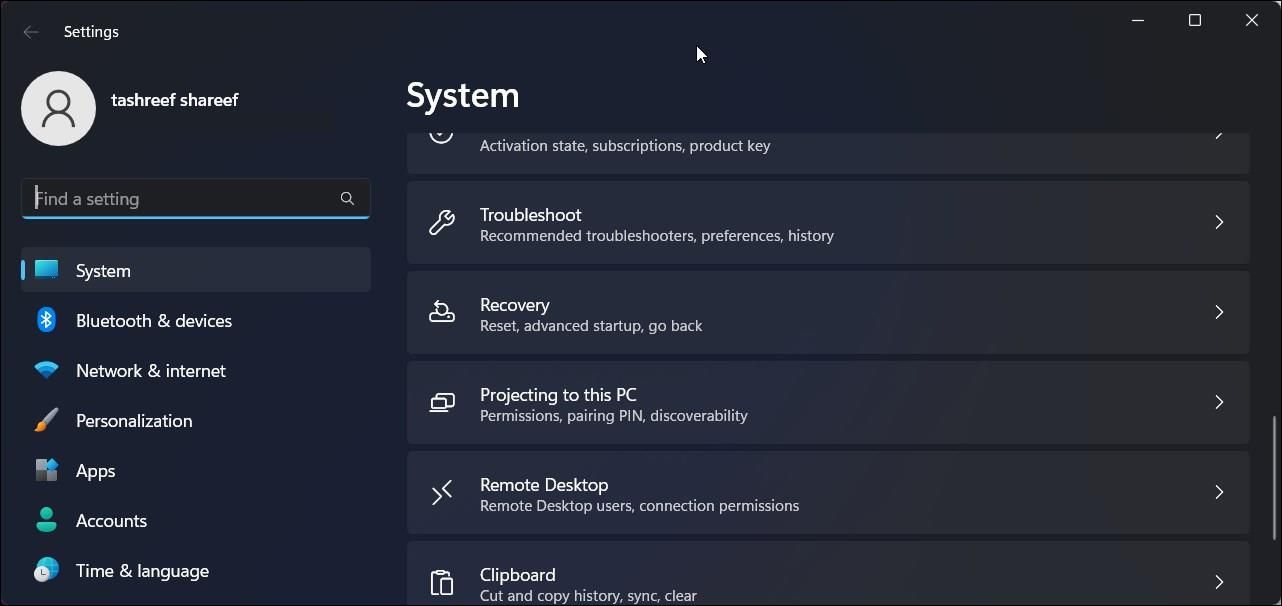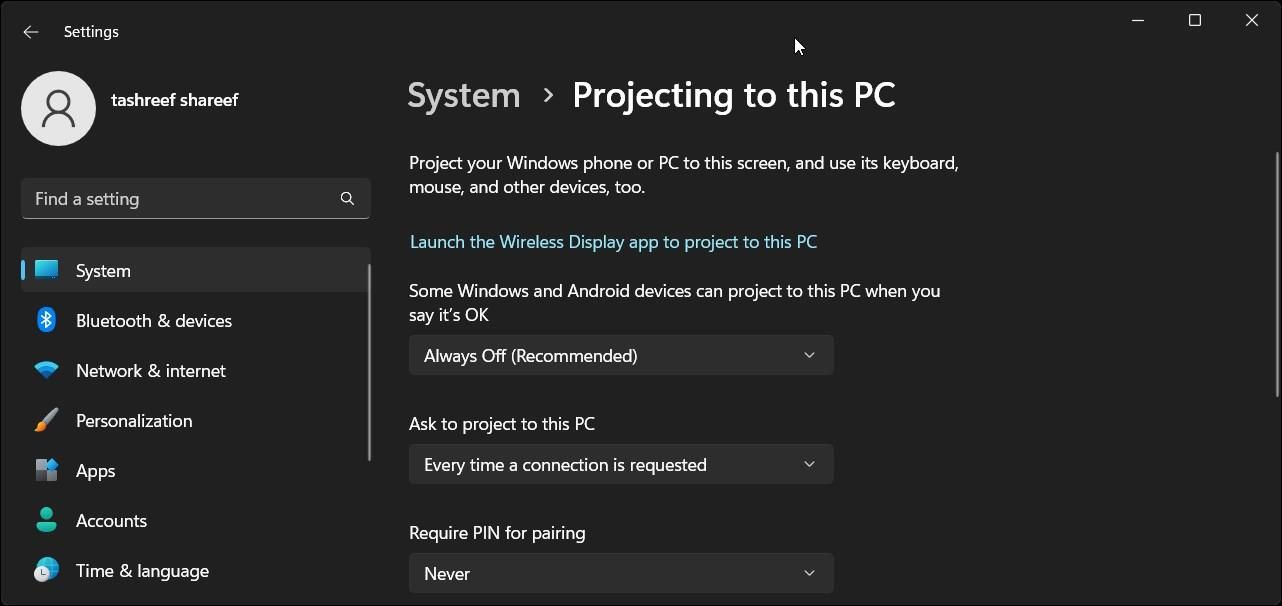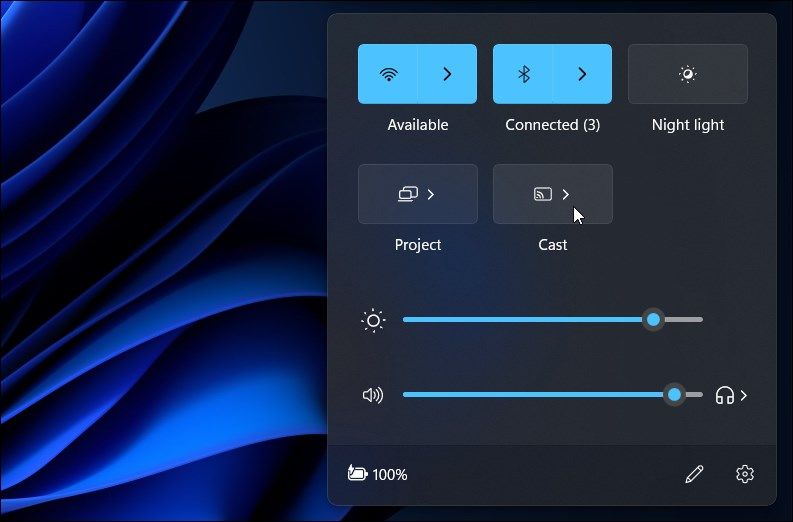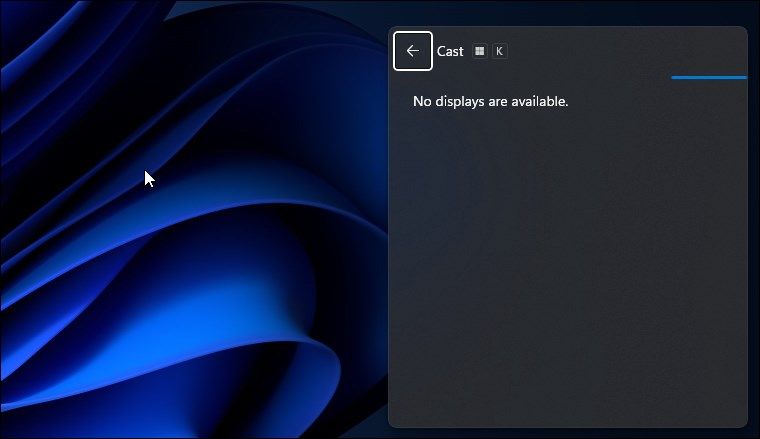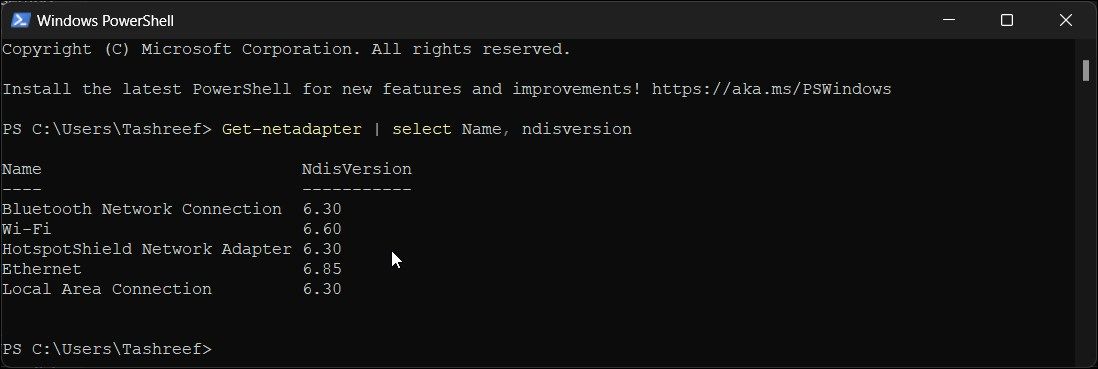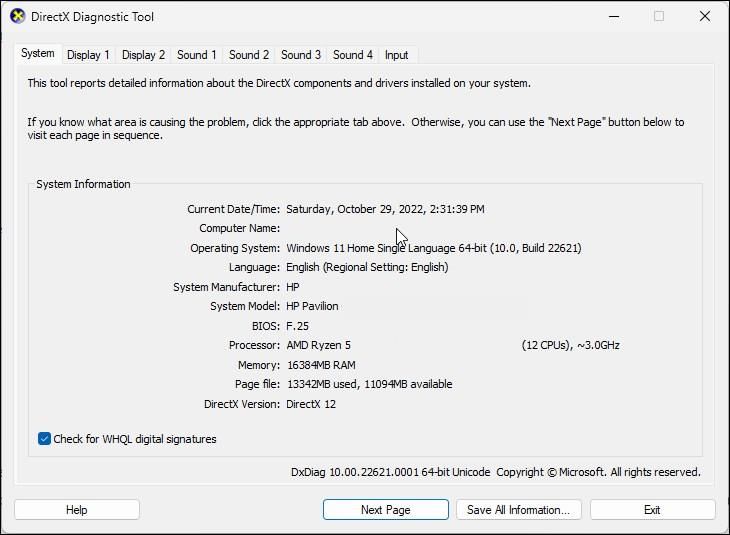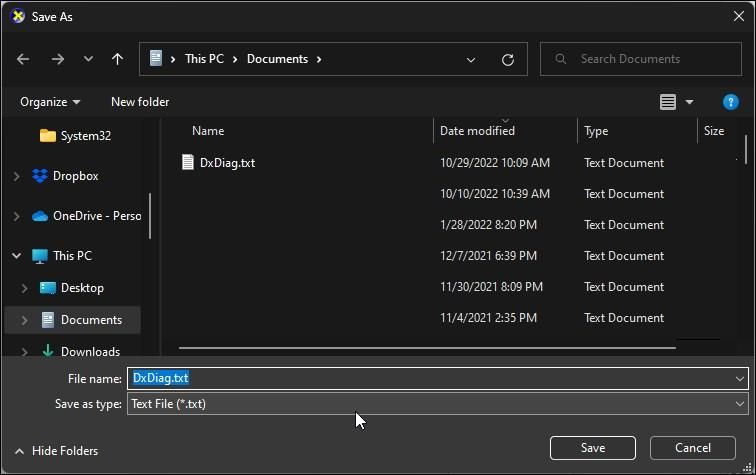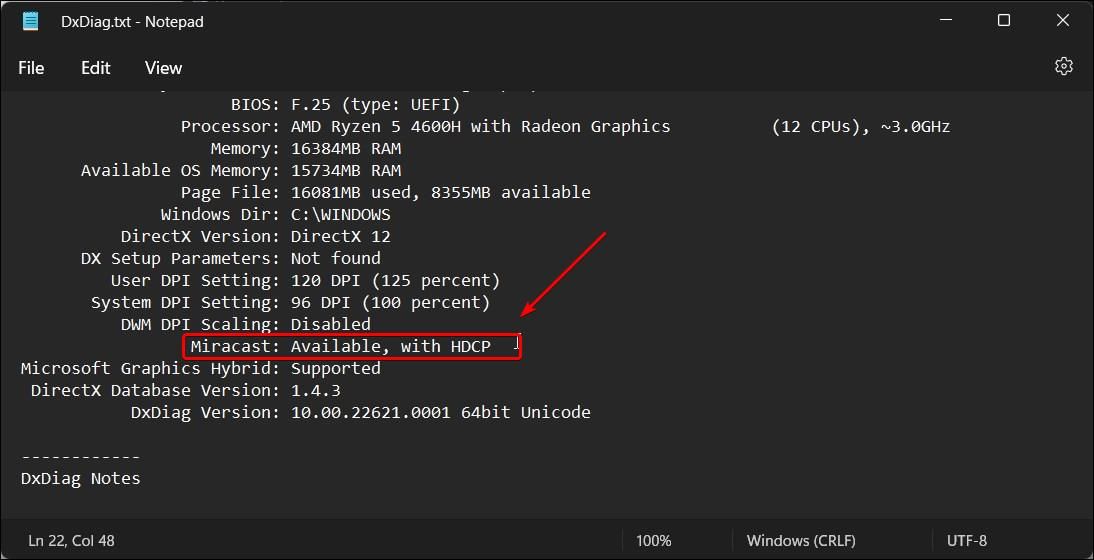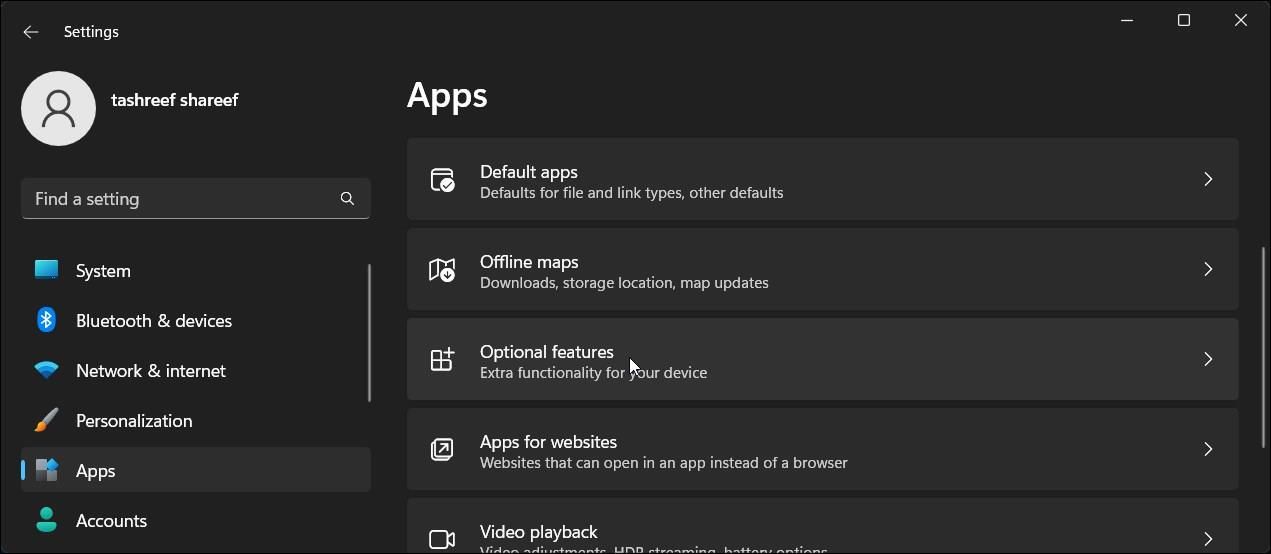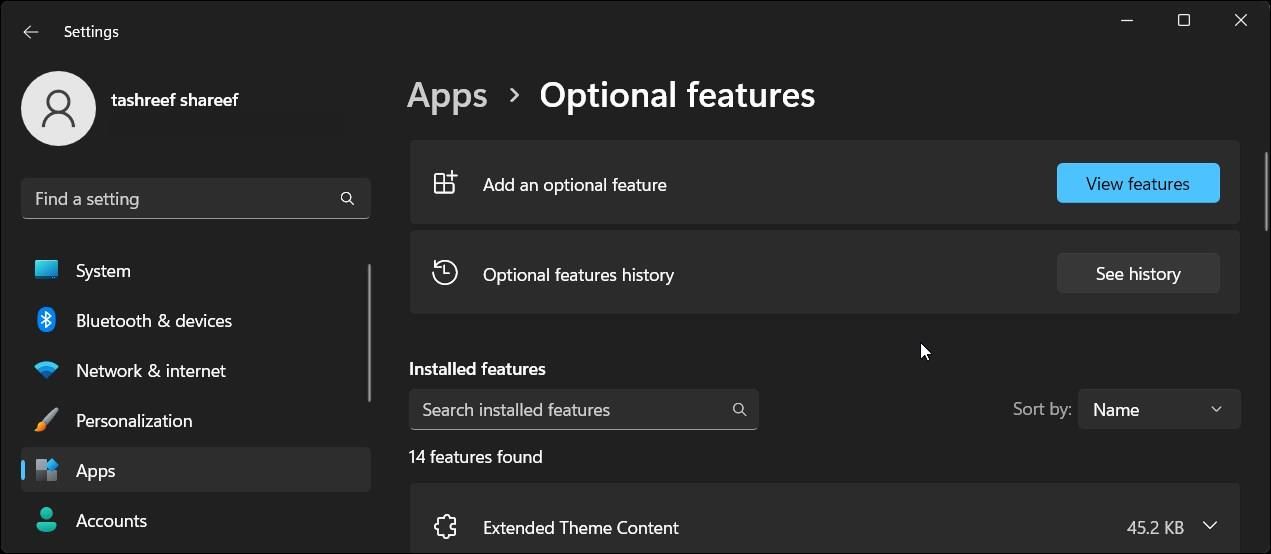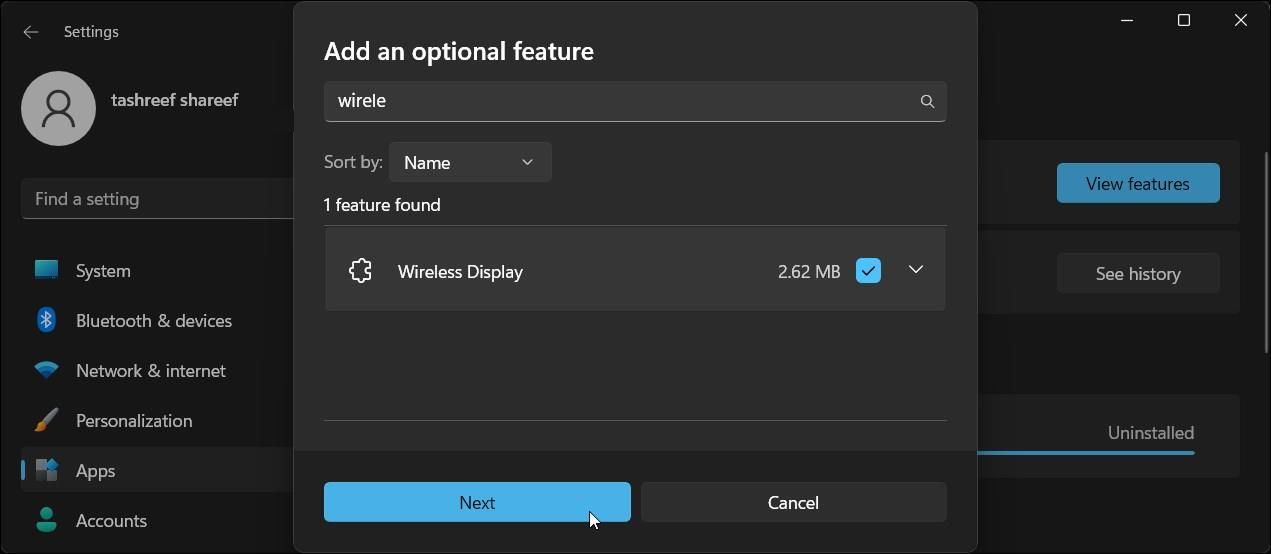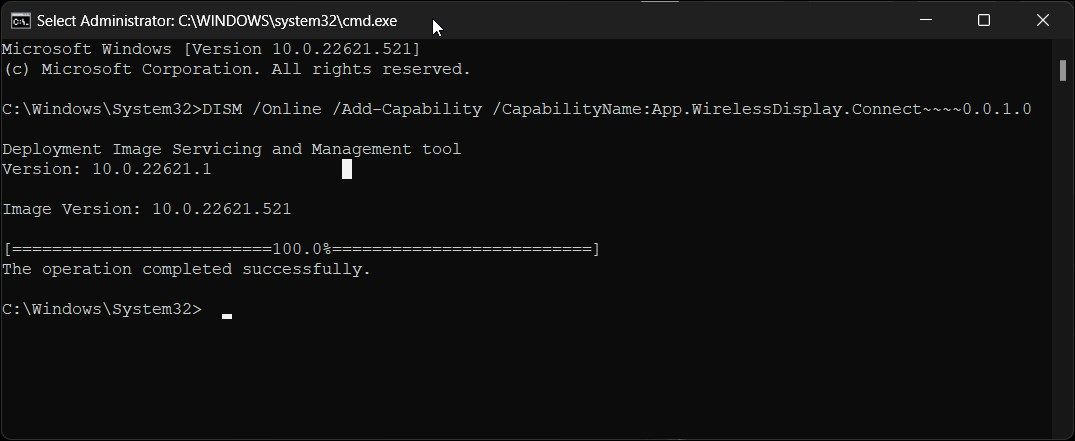Your Windows 11 and 10 PC comes with an integrated Wireless Display feature. This allows you to mirror and cast your computer to an external display such as a monitor or smart TV.
However, for the wireless display feature to work, your computer and the receiving device must support Miracast. While most modern Windows 11 computers support Miracast out of the box, you can also manually check for Miracast compatibility in settings. Here we show you how.
1. Check Miracast Compatibility Using the Settings Panel
You can review your system's projection settings to view Miracast compatibility on your PC. Here's how to do it.
- Press Win + I to open the Settings panel.
- Next, in the System tab, scroll down and click on Projecting to this PC.
Depending on your system configuration, you'll see one of the following returns:
- On a Miracast-compatible system, you will see the options to configure the wireless display. You can configure PC discovery and allow and disallow other devices from connecting to your PC.
- If you see Add the "Wireless Display" optional feature to project this PC message, you will need to install the Wireless Display feature to enable Miracast.
- If your PC doesn't support Miracast, it will show that this device doesn't support receiving Miracast, so you can't project to it wirelessly.
That said, this error can also occur due to Wi-Fi issues, display driver problems, and third-party app conflicts. Explore our guide to fix the device doesn't support Miracast error to fix the error.
2. Check Miracast Compatibility with Action Center
The new Action Center in Windows 11 features Quick Actions flyout that lets you manage your network connectivity, control the brightness, and adjust the volume levels. You can use the Cast option in the Action Center to detect if your computer supports Miracast.
- Click on the Network, Volume, and Battery icons in the Taskbar open Action Center.
-
Here, click the Cast icon.
-
On Miracast-supported systems, the Cast option will start scanning for available Wireless Displays.
- If not, you will likely see the Your device doesn't support Miracast message.
- You can also access the Cast option with the Win + K shortcut.
3. Using Command Prompt to Detect Miracast Compatibility
You can also use the Command Prompt to find Miracast compatibility of your Windows 11 computer. The netsh command-line tool lets you view and manage your Wi-Fi connections.
We will use the "netsh wlan show drivers" command to view the Wi-Fi network driver to detect Miracast compatibility. Here's how to do it.
- Press Win + R to open Run.
- Type cmd and click OK to open the Command Prompt.
-
In the Command Prompt window, type the following command and hit Enter:
netsh wlan show drivers - Scroll down and locate the Wireless Display Supported section. If it shows Yes, (Graphics Drive: Yes, Wi-Fi Driver: Yes), your computer is Miracast supported.
4. Check Miracast Compatibility Using Windows PowerShell
You can also use Windows PowerShell to check Miracast compatibility on your Windows 11 PC. Miracast requires your PC to support Wi-Fi Direct and Virtual Wi-Fi, available in NDIS version 6.3 and above. While you can use the Command Prompt command in PowerShell, it also has its own cmdlets to view Wi-Fi driver details.
- Press the Win + S to open Windows search.
- Type powershell and open it from the search result.
-
In the PowerShell window, type the following command and press Enter to list the supported version of available network adapters:
Get-netadapter | select Name, ndisversion - If the Wi-Fi NdisVersion shows 6.30 or above, your computer should support Miracast.
- Type exit and hit Enter to close Command Prompt.
5. Detect Miracast Compatibility Using DirectX Diagnostic Tool
The DirectX Diagnostic Tool (DxDiag) helps you collect information about connected devices and troubleshoot them for issues with DirectX sound and video.
You can use this tool to detect Miracast compatibility on your system. Here's how to do it.
- Press Win + R to open Run.
-
Type dxdiag and click OK.
- The DirectX Diagnostic Tool will open with the System tab selected.
-
Next, click on the Save All Information button.
-
Select the destination to save the file and click Save.
- Next, open File Explorer, navigate to the DxDiag file save location, and open the DxDiag.txt file.
- Here, scroll down and locate Miracast. If it says Supported, you should be able to cast and screen mirror to other devices. If it says "Not Supported by Graphics driver", check if you have installed the optional Wireless Display feature.
How to Install the Optional Wireless Display Feature
The optional Wireless Display feature adds the Connect app to Windows 11 and 10 devices. It lets you connect and project your PC to a Miracast-compatible TV, etc.
If you find the Wireless Display feature missing, here is how to install it manually in Windows 11.
To install the optional Wireless Display feature:
- Press Win + I to open Settings.
- Next, open the Apps tab in the left pane.
-
Click on the Optional feature option.
- Here, click the View features button for the Add an optional feature option.
-
In the Add an optional feature dialog, type Wireless Display.
- Select the feature from the search result and click Next.
-
Click Install to continue.
- Windows will download and install the requested feature. Next, restart your PC to apply the changes.
If you see an error, restart your PC and then try to install the optional Display Feature to see if it helps. Alternatively, you can also use the Command Prompt to install Wireless Display.
To install Wireless Display using Command Prompt:
- Press Win + R and type cmd.
- Now press and hold the Ctrl + Shift key and click OK to open the Command Prompt as administrator.
-
In the Command Prompt window, type the following command and hit Enter:
DISM /Online /Add-Capability /CapabilityName:App.WirelessDisplay.Connect~~~~0.0.1.0 - This process may take some time. So, wait till the installation is 100% complete.
- Once done, restart your PC to apply the changes.
Most Modern Windows PCs Support Miracast Out of the Box
If your PC came with Windows 10 or 11 out of the box, it should also support Miracast. If you are unsure, you can use one of the following methods in this article to confirm Miracast compatibility.
That said, even on Miracast-compatible systems, you can run into issues when you try to project. The common contributing factors include issues with your display or network driver, incorrect Wi-Fi configuration, and system file corruption.

